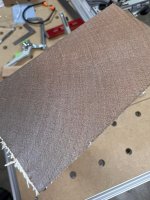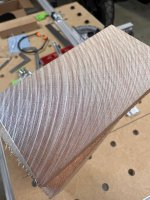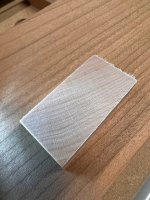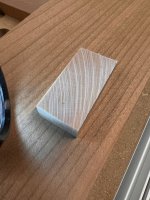The TS60 is my first powered saw, so I'm learning about track saws and powered saws in general. I've been making some test cuts on the MFT/3 and am finding that a slow and steady feed rate is causing saw marks when crosscutting hardwood using the stock 42T blade. On the other hand, pushing the saw through quickly results in little to no saw marks on the end grain, but a rougher overall texture and more splintering on the rail-side top of the cut and especially on the exit of the cut against the fence. I've been pushing the saw past the fence and raising the blade only once it is clear of the work piece and am using the highest speed setting.
I'm having a hard time finding information on feed rate and cut quality for crosscutting hardwoods with the track saws, so does anyone have some wisdom to share? My guide rail on the MFT/3 does have some play in the pin so I have a slop stop on order, could it just be an issue of excess vibration? Should I get another 42T blade? The amount of saw marks left has been pretty inconsistent.
I've attached some images, two cuts in 2x4 cherry and two cuts in 1x2 hard maple. The first in each set is from pushing the saw through quickly, the second is from pushing the saw through slowly.
I'm having a hard time finding information on feed rate and cut quality for crosscutting hardwoods with the track saws, so does anyone have some wisdom to share? My guide rail on the MFT/3 does have some play in the pin so I have a slop stop on order, could it just be an issue of excess vibration? Should I get another 42T blade? The amount of saw marks left has been pretty inconsistent.
I've attached some images, two cuts in 2x4 cherry and two cuts in 1x2 hard maple. The first in each set is from pushing the saw through quickly, the second is from pushing the saw through slowly.




